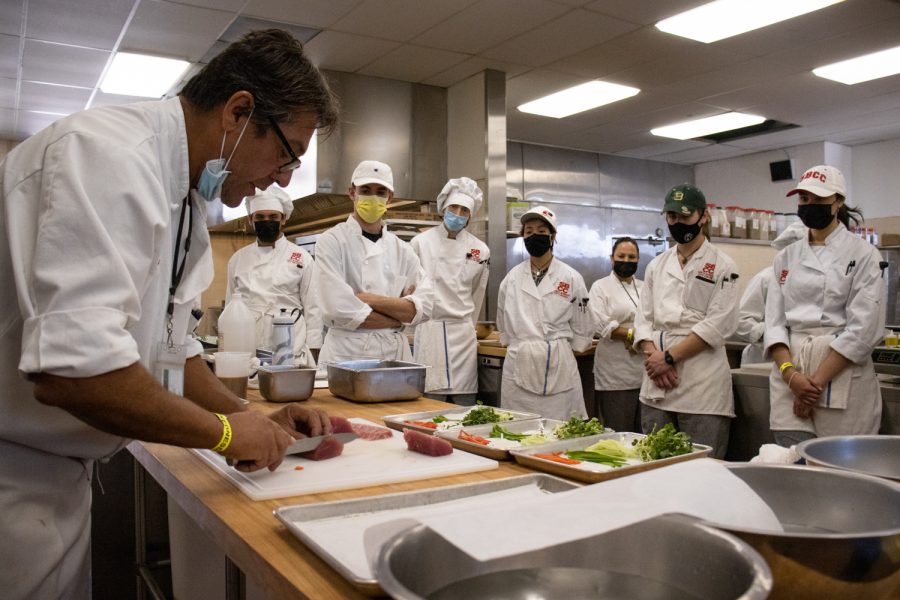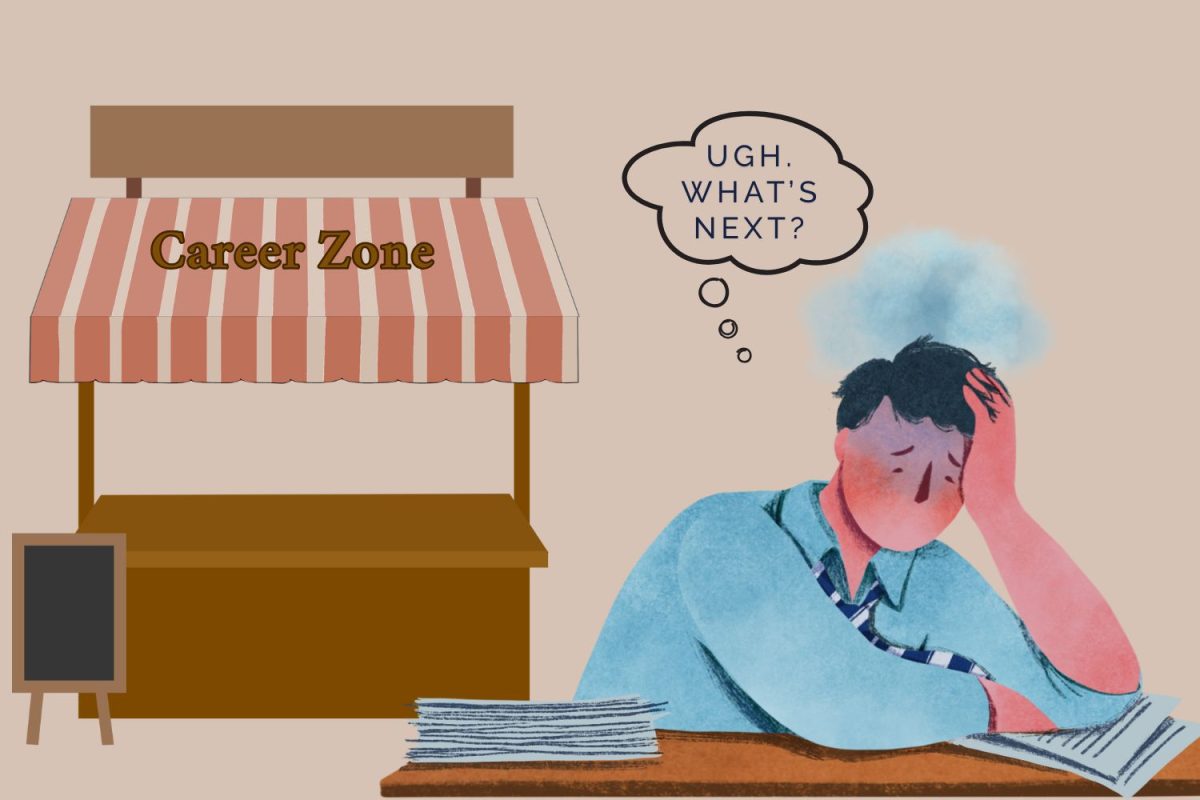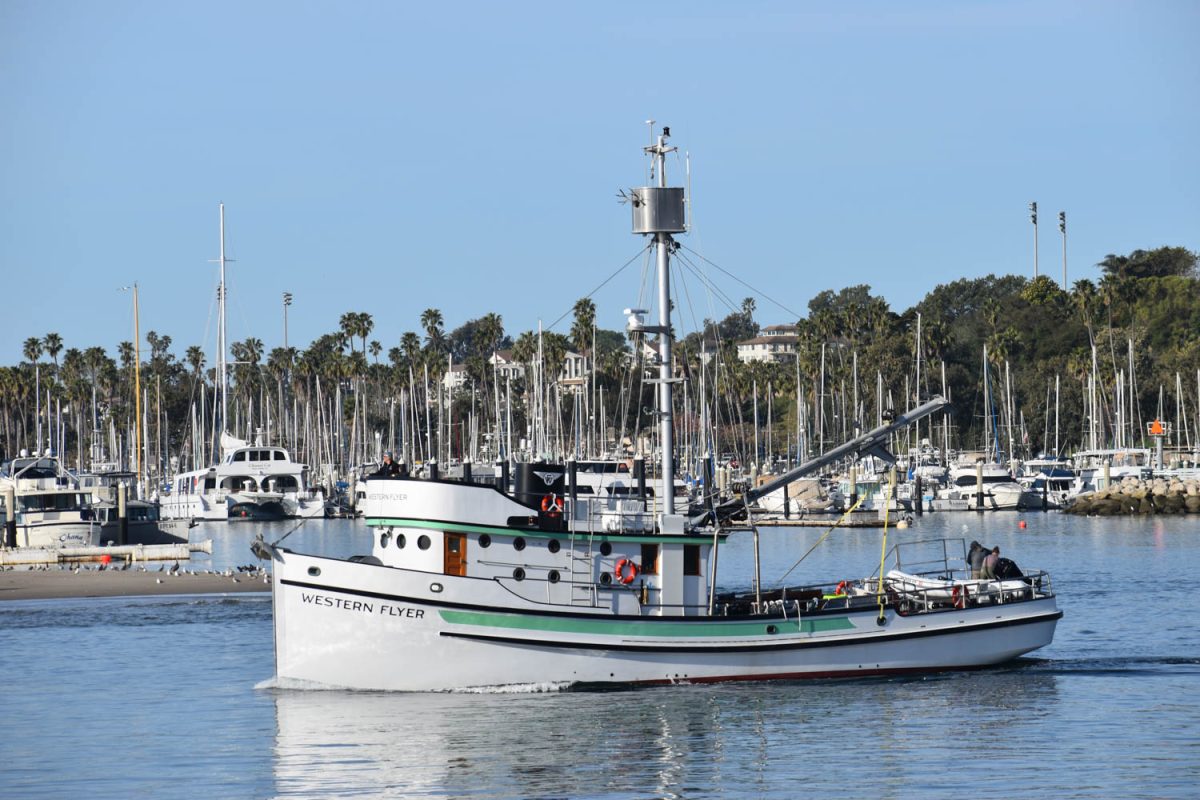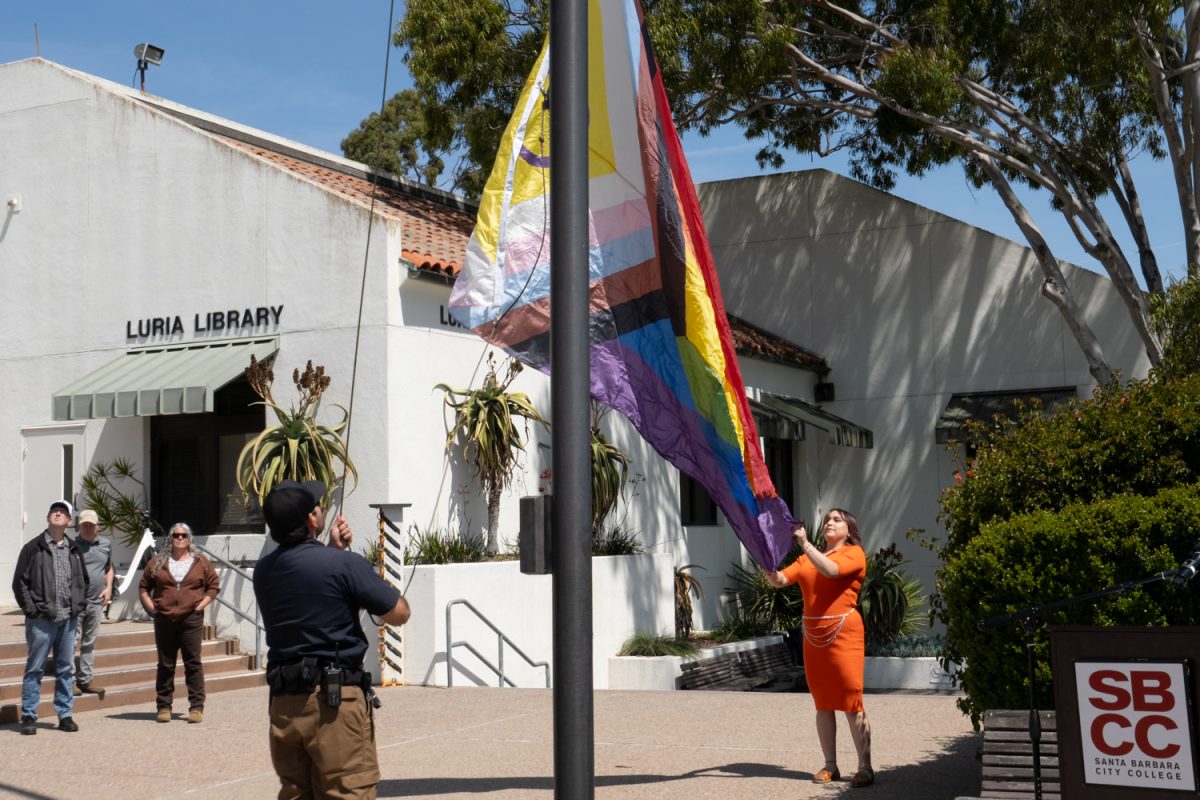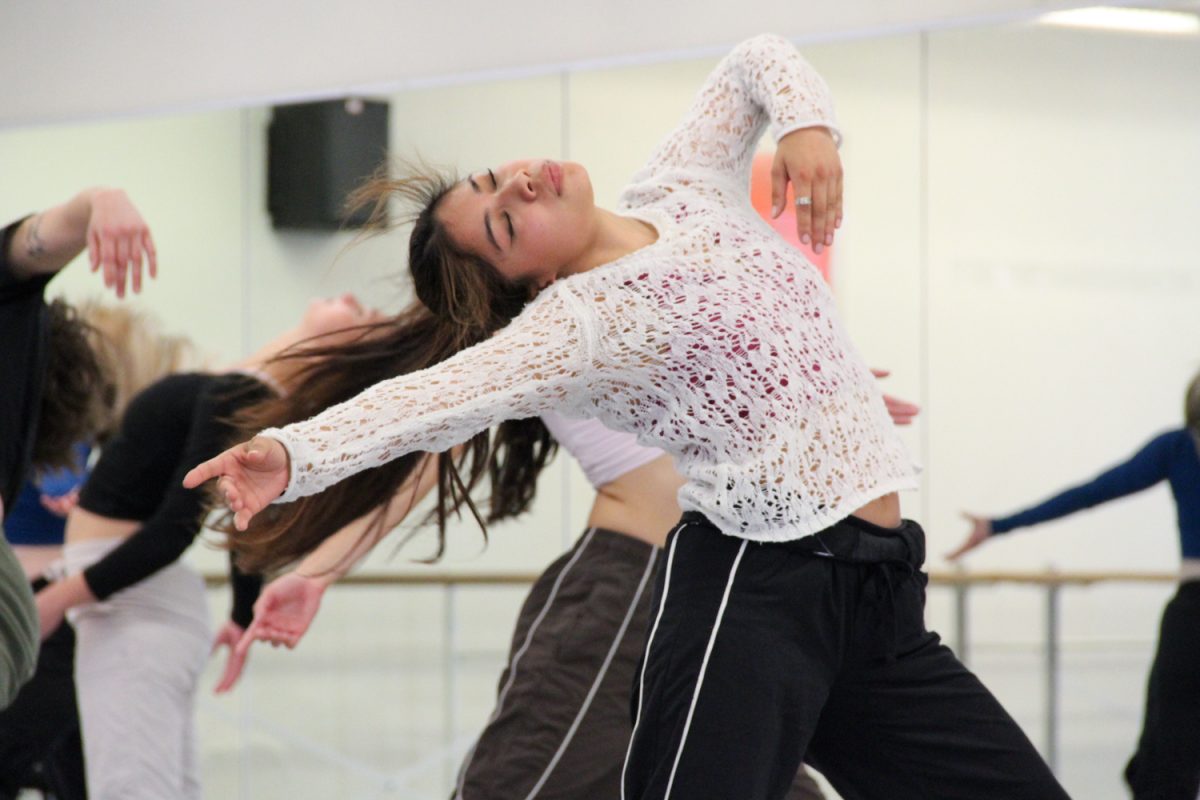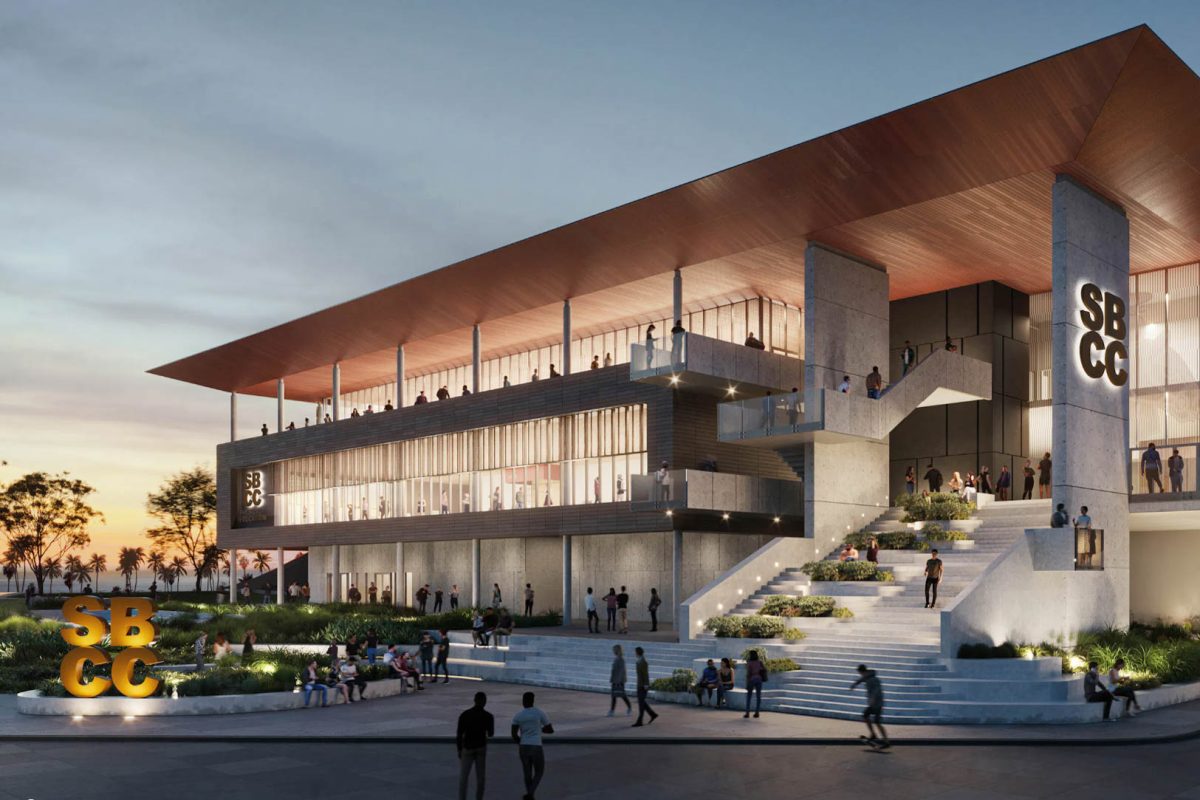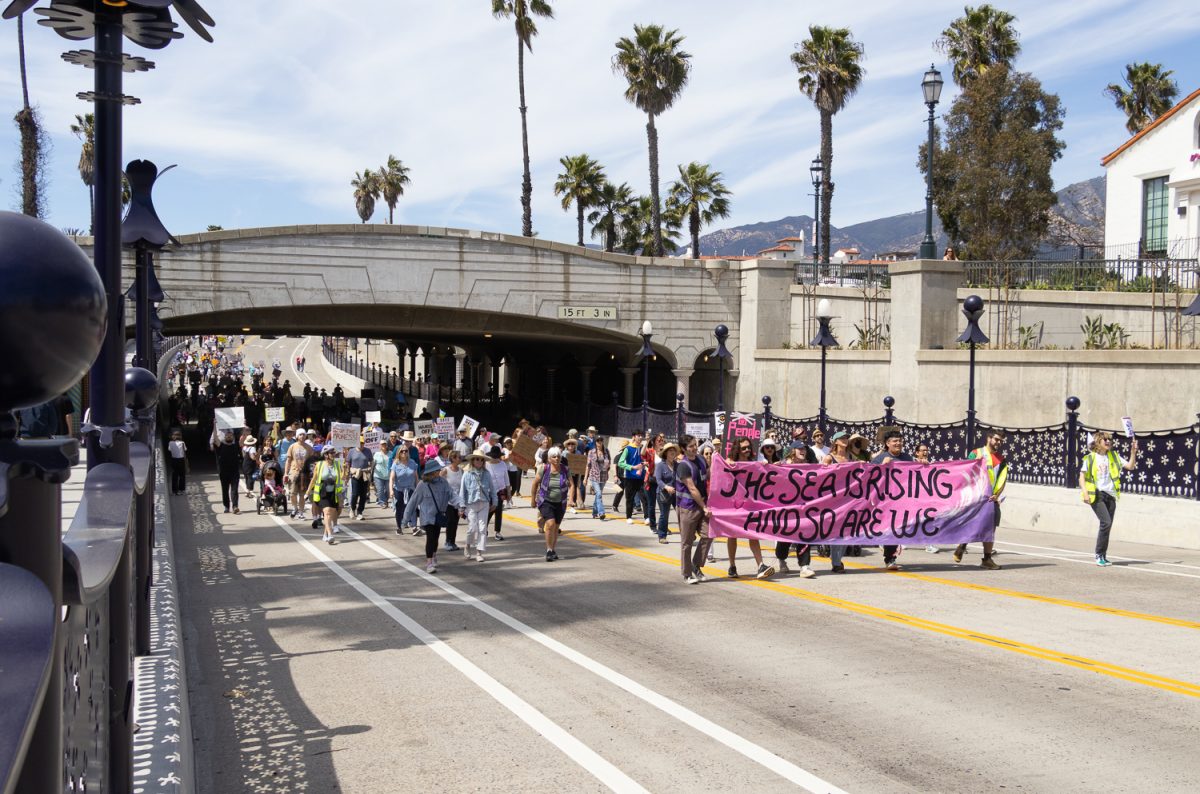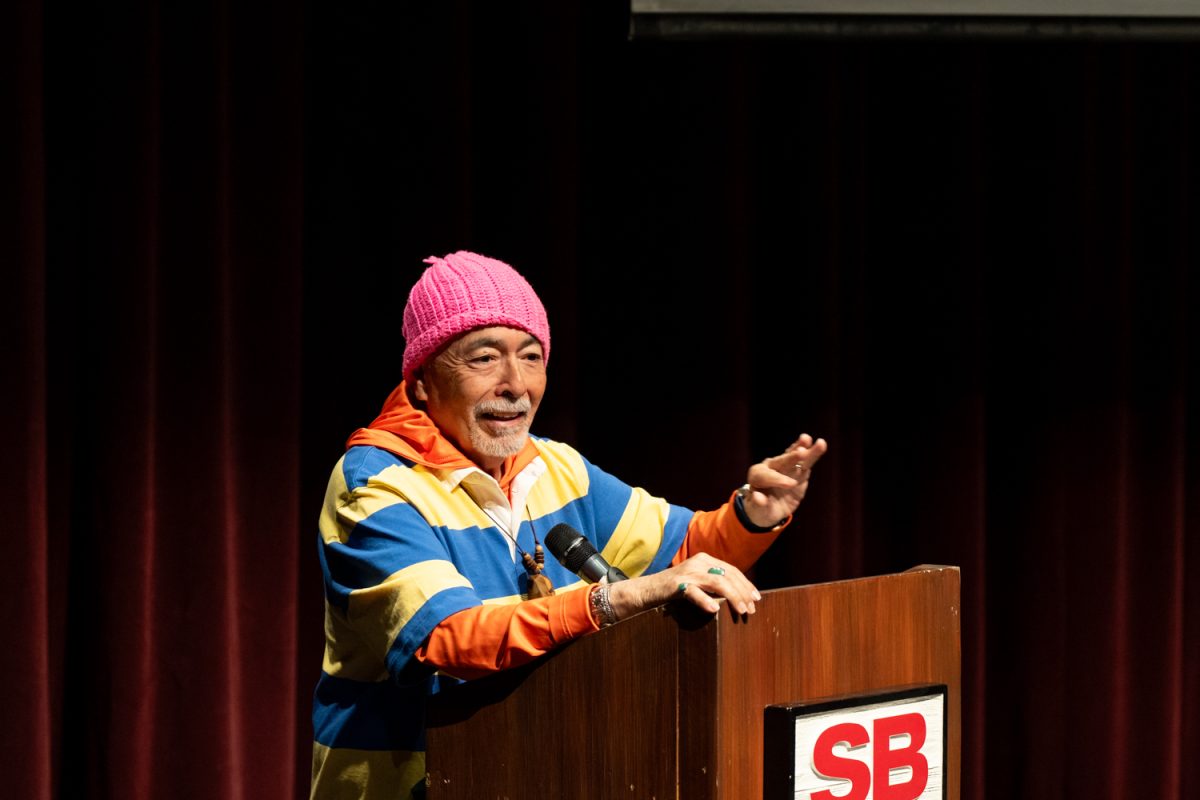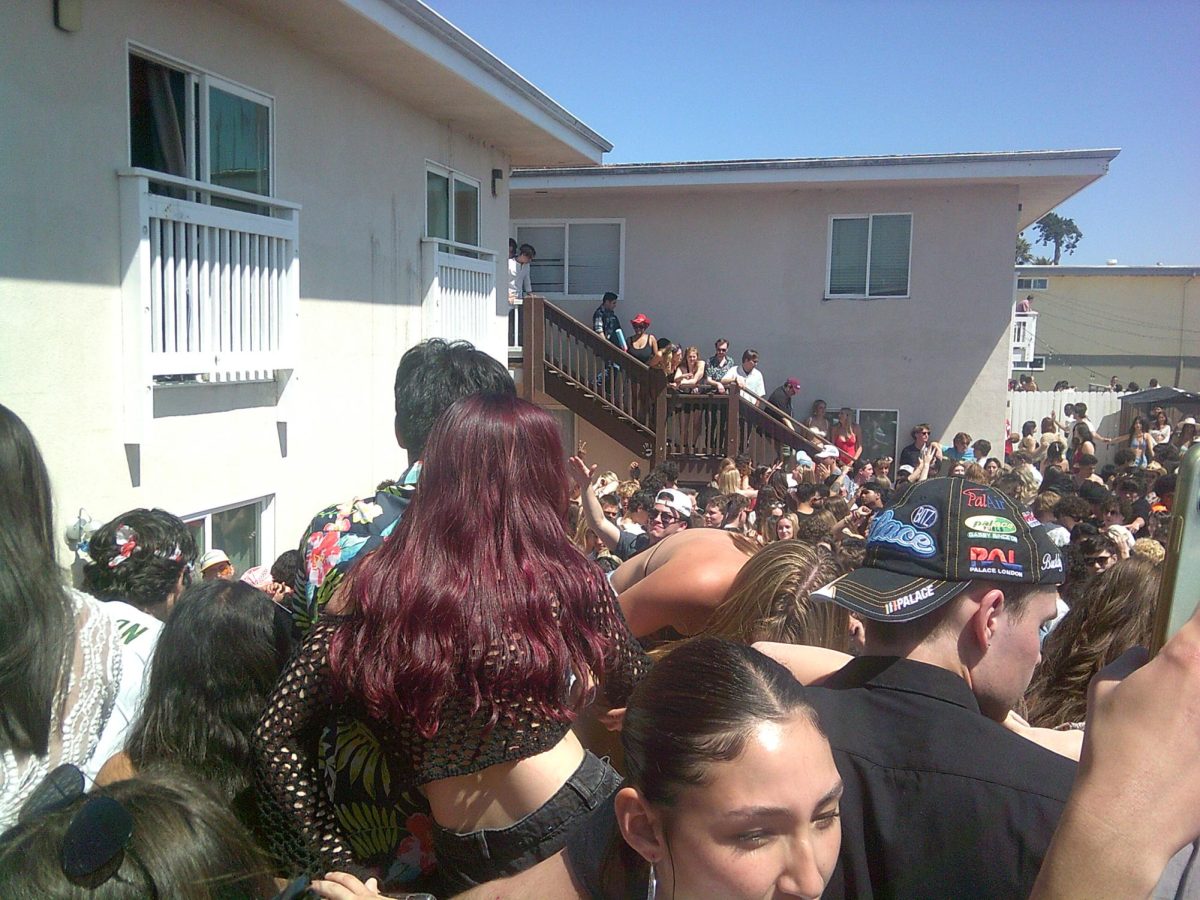The culinary arts students are back and cooking up delicacies in their kitchen this semester for the first time since before the pandemic.
All of last year was spent cooking in an assigned station in the cafeteria where all the ingredients were already prepared and brought to the students at their stations. Now it is taking place back in the kitchen down below. Here students have the chance to work with one another this time around to make dishes with the ingredients they’ve gathered together each week.
“I am excited for this sparkly new kitchen, it will allow for more stations to be created to accommodate students in groups,” chef and instructor Stephane Rapp said. “It is nice to be a part of this new adventure.”
Over the summer and through the beginning of this fall semester, a new kitchen was built for these students to utilize with new kitchen equipment.
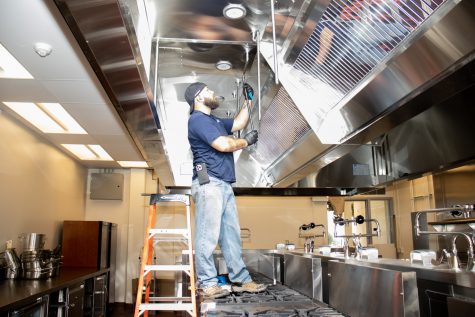
“This is my first year in the culinary arts program and so far I am really enjoying getting to be in the kitchen,” student Angel Carbajal said. “I am always cooking and getting to meet new people and work alongside them.”
There are also returning students in this program who, until recently, took socially distanced classes in the cafeteria. Some were not able to take any courses this past year due to not enough classes being offered in person.
“Working in the kitchen so far has been such a different experience than when I worked in the cafeteria last semester,” student Ariana Gomez stated. “There are so many different kitchen appliances everywhere rather than the few that we would have at our stations.”
The set-up in the cafeteria was made up of 24 socially-distanced stations, each having a tall rolling cart used to prepare food on. Alongside the rolling cart was a fold-up table which included up to 3 stove-tops and a pan filled with all the measured out ingredients needed for each of the recipes. This allowed for students to stay socially distanced safely.
“Not having Chef Charlie or Chef Rapp at the front of the classroom showing us step-by-step has been something that I took time adjusting to,” student Aurora Hernandez said. “Now instead we’re pretty much on our own around the kitchen.”
It’s evident that there is a change from this year to last year in how students adjusted from working in the cafeteria on their own to working with classmates in the kitchen.
Setting up the cafeteria to be a make-shift kitchen for the program cost $30,000.
“Teaching in the cafeteria felt as if I went camping, I loved the escape and the pretty view we got while getting to cook,” chef and instructor Charles Fredericks said. “But now, returning to the kitchen, it feels much better and as if we returned to our mansion.”
Fredericks also went on to say how much work and dedication there is by so many who came together to get the cafeteria up and running, allowing the students to learn in person regardless of the circumstances the world was going through.
“I love the constant drive that everyone has in getting students educated regardless of the pandemic,” Fredricks said.


